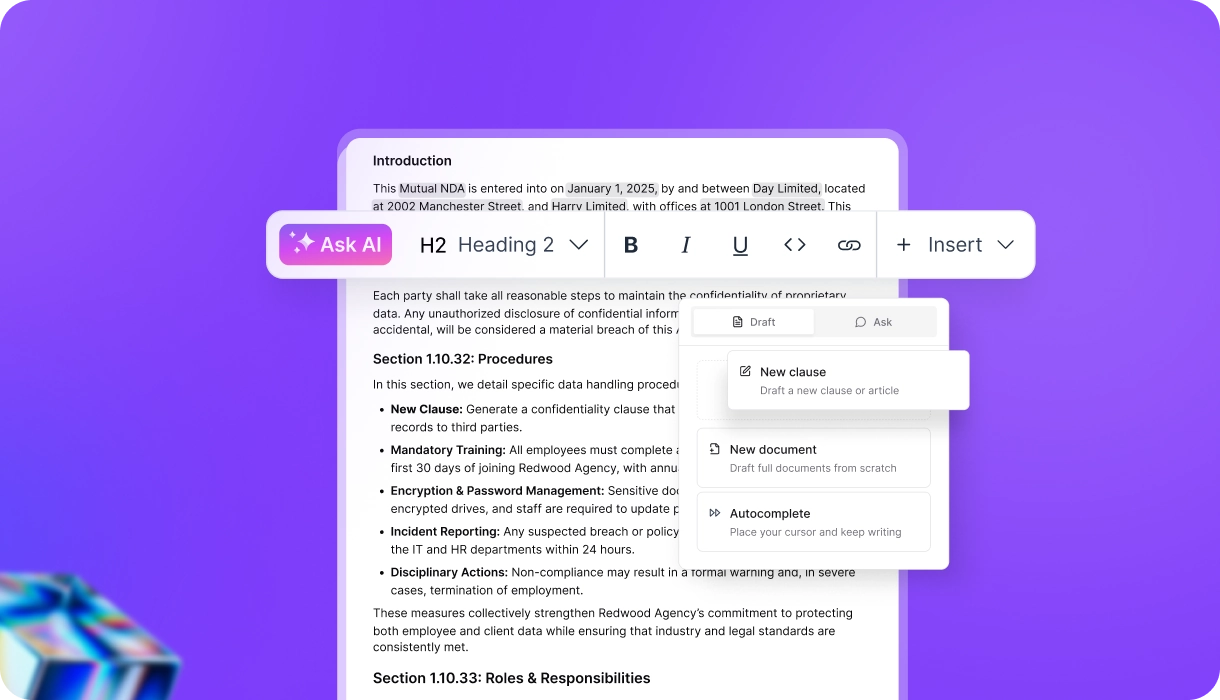You've tried it. You asked a general AI chatbot to draft a clause, summarize a case, or explain a legal concept. The result was… underwhelming. Generic, slightly off-topic, and certainly not client-ready. The problem wasn't the AI; it was the instruction.
Generative AI is an incredibly powerful tool, but like any powerful tool, its output is only as good as the input it receives. Mastering the art of 'prompt crafting' is the single most important skill for leveraging AI in legal practice. It's the difference between getting a vague, unhelpful paragraph and a precise, actionable answer. This guide will teach you the core principles for writing prompts that deliver real results.
The Secret: Treat Your AI Like a First-Year Associate
The most effective mental model for writing a good prompt is to imagine you are giving instructions to a very smart, very literal, but completely inexperienced first-year associate. They have access to a vast library of information but lack any context about your specific case or standards. You wouldn't just tell them to 'handle it'; you would provide clear, structured instructions. The same applies to your AI.
1. Provide the 'Case File': Context is Everything
A generic AI has no context. It doesn't know the parties involved, the governing law, or the purpose of the document. Your first job is to provide this context directly within the prompt. The more relevant background you provide, the more tailored the response will be.
Generic Prompt (Bad):
'Draft a limitation of liability clause.'
Context-Rich Prompt (Good):
'Acting as a senior corporate lawyer, draft a limitation of liability clause for a Master Services Agreement. The service provider is a US-based SaaS company. The client is a UK-based enterprise customer. The clause must cap liability at the total fees paid in the preceding 12 months.'
2. Be Specific: Define the Scope and Constraints
Never leave room for ambiguity. An AI will fill in the gaps with its most probable (and often generic) knowledge. You need to provide clear constraints, including the desired format, length, and key points to include or exclude.
Vague Prompt (Bad):
'Summarize this document.'
Specific Prompt (Good):
'Summarize the attached Non-Disclosure Agreement in three bullet points. Focus specifically on: (1) the definition of 'Confidential Information', (2) the term of the confidentiality obligation, and (3) any explicit exclusions.'
3. Assign a Role and Define the Tone
Always tell the AI *who* it is and *who the audience is*. The tone and complexity of the output will change dramatically based on this instruction. Are you drafting a formal clause for a contract, or explaining a complex legal issue to a non-lawyer business client?
Example Prompts:
'Explain the concept of indemnification as you would to a startup founder with no legal background.'
'Draft a formal indemnification clause for inclusion in a B2B software license agreement.'
Beyond the Single Prompt: Building a System
Once you've crafted a prompt that delivers a perfect result, the last thing you want is to have to re-type it every time. This is where the true power of a professional legal AI platform comes into play. The ability to save your best prompts into a shared, searchable team library transforms individual skill into a scalable firm asset.
This is where a platform like LegalWeave distinguishes itself. It allows you to create and share a team-wide 'command playbook,' ensuring that everyone in your organization can execute complex tasks with the same proven, high-quality language. It standardizes excellence.
By treating your AI as a capable but context-less associate—providing clear context, specific constraints, and a defined role—you will unlock its true potential. It's a skill that turns a frustrating novelty into an indispensable tool for every modern legal professional.
